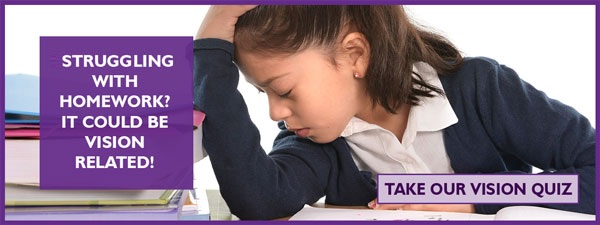
Why A Vision Screening in Oklahoma City Is Not Enough
How can I tell if my child has vision problems that affect their ability to read and learn?
Learning is 80% or more visual. Reading, writing, spelling, computer work, and seeing the board are all learning tasks that our children are required to perform in order to achieve success at school. These visual tasks and others that will be discussed below are all tasks that require accurate vision and quick visual response times, at near, middle, and far distances.
Experts say that 20% of school-aged children do not possess the visual skill set that allows them to excel in school. It is important to remember that this 20% is referencing children with and without glasses or contact lenses, because having 20/20 vision addresses only one aspect of vision. A child in school will use a wide variety of visual skills that not only affect reading speed and accuracy, but also include reading comprehension and the ability to quickly browse through text.
Why A School Vision Screening Is Just Not Enough
A school vision screening tests the ability to pass the eye chart from 20 feet away. Studies show that 43% of children with vision problems can pass a school vision screening. This is because many children have visual issues that are simply not evident when assessing distance vision. Examples of children who can pass a vision screening are those with double vision, binocular vision issues, and tracking or visual perceptual problems.
Early identification of a child’s vision problems is crucial because, if left untreated, they may cause permanent vision loss. All vision problems can affect school performance and social integration.
What Is A Vision Screening?
An eye chart - nothing in depth, only distance vision.





